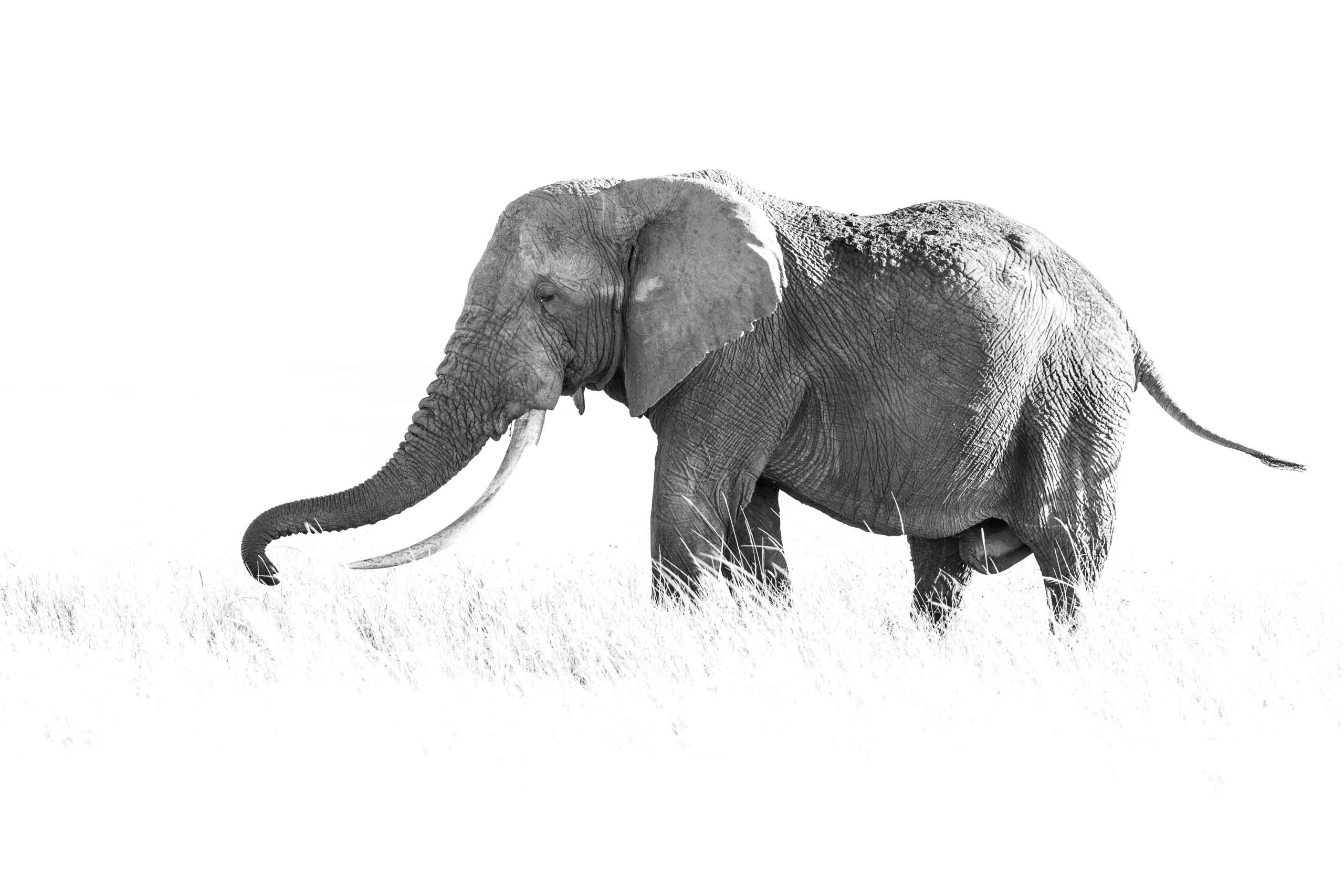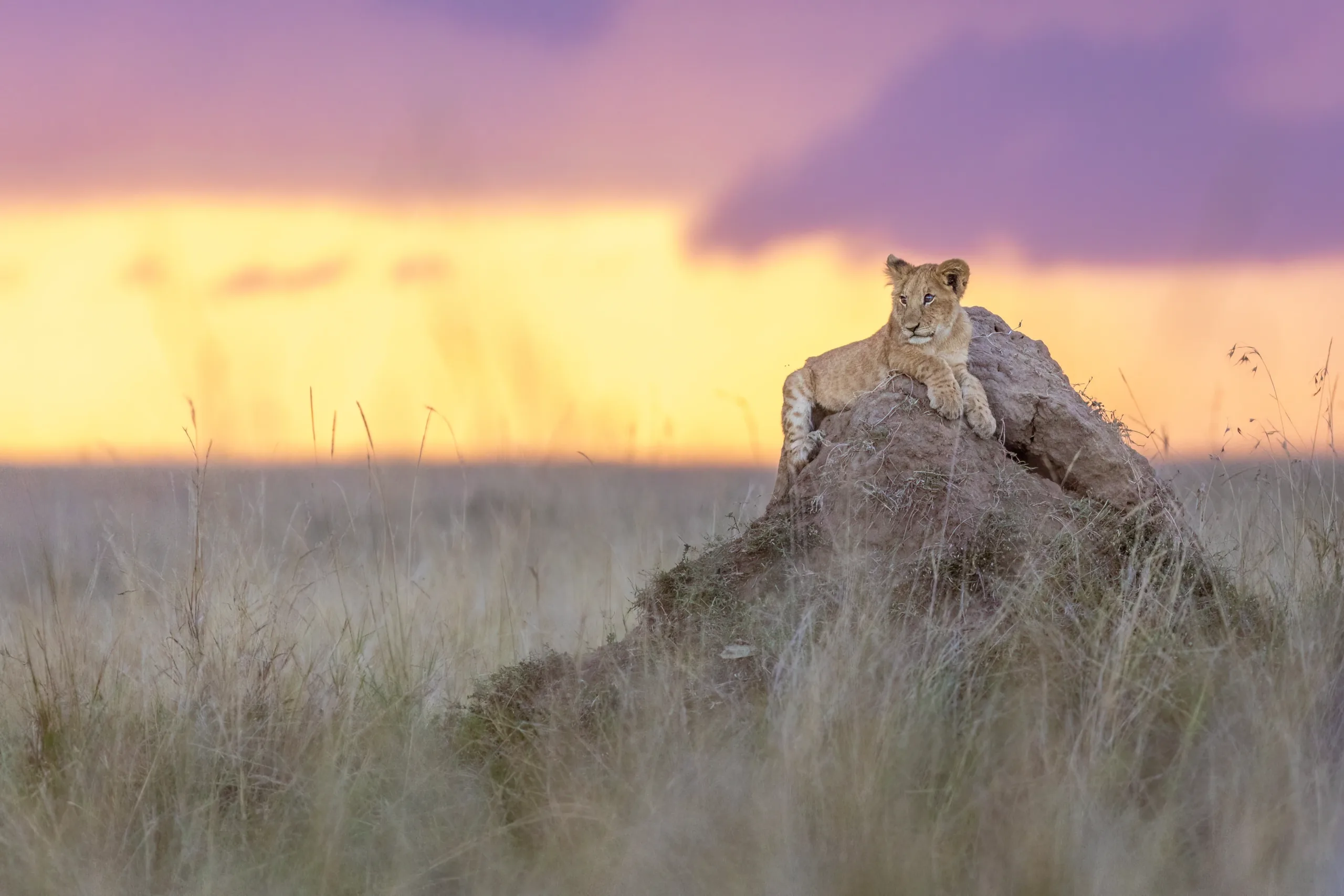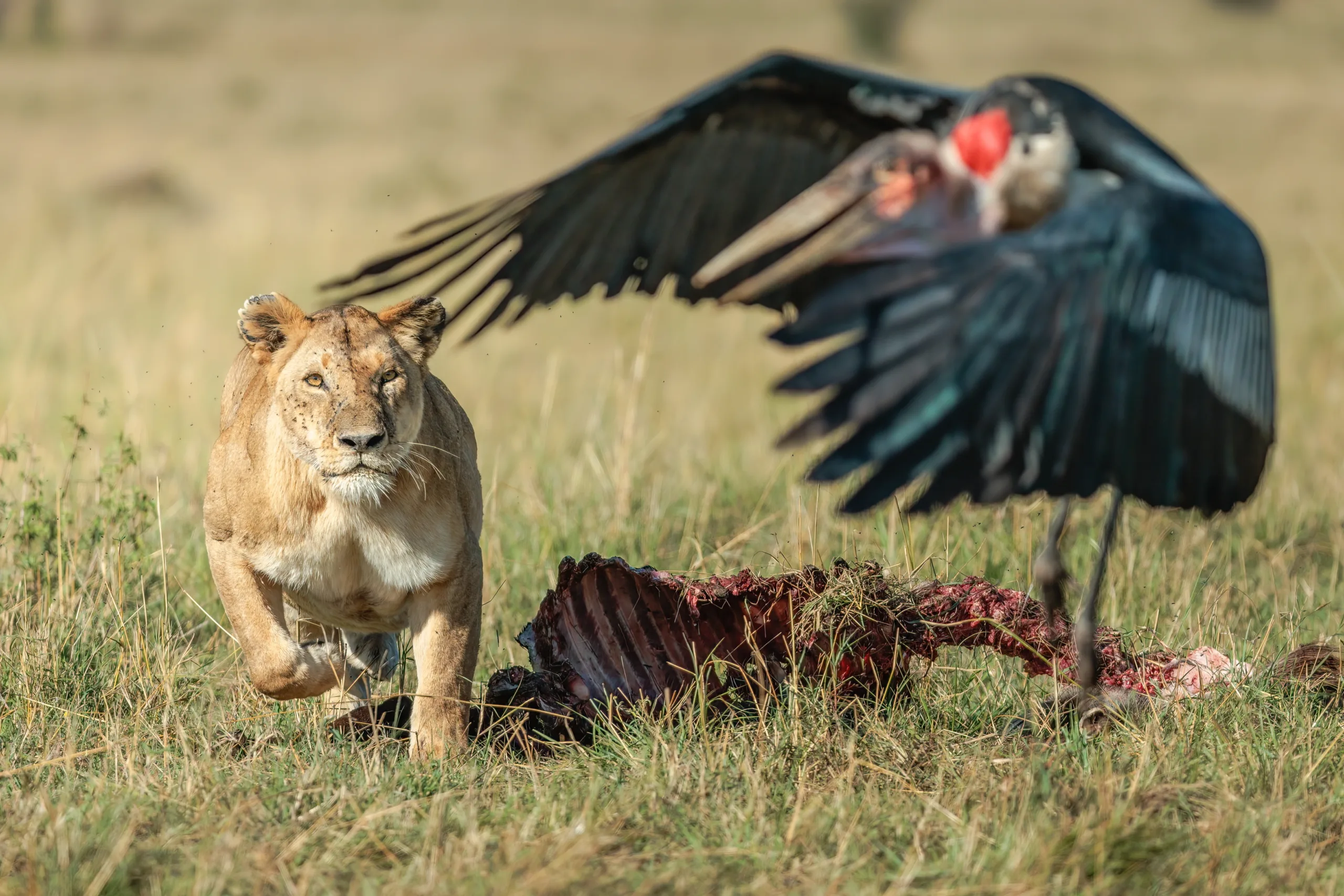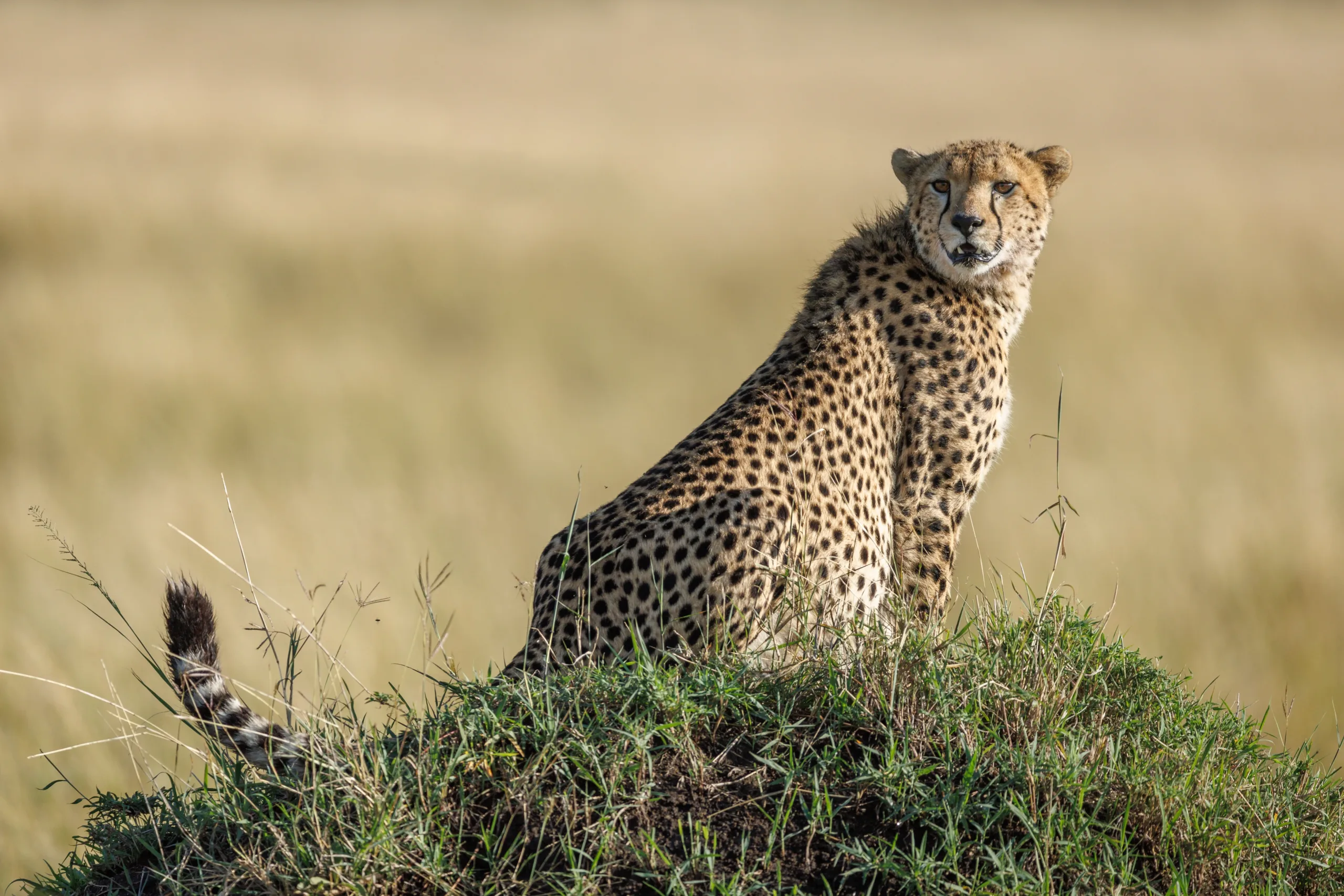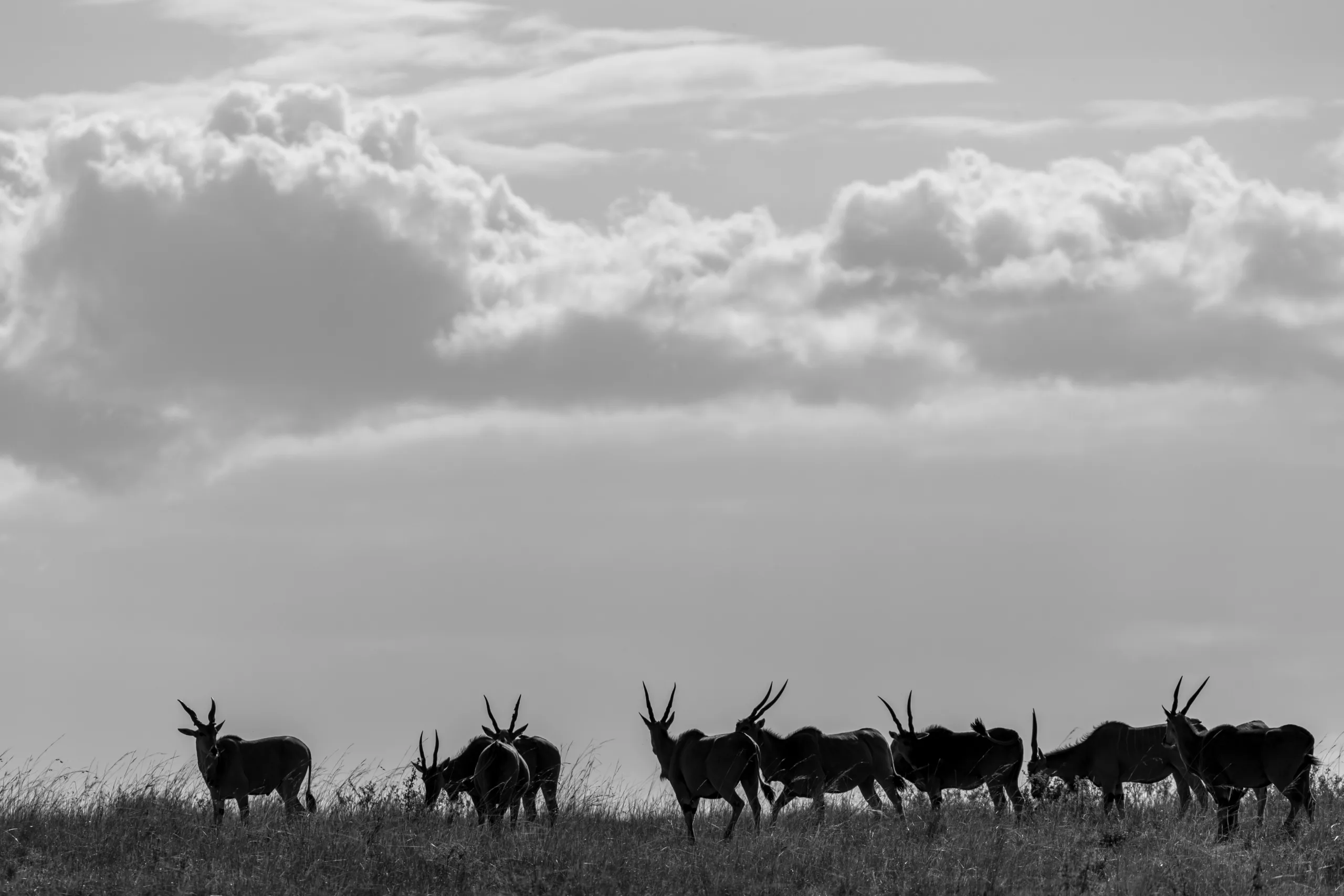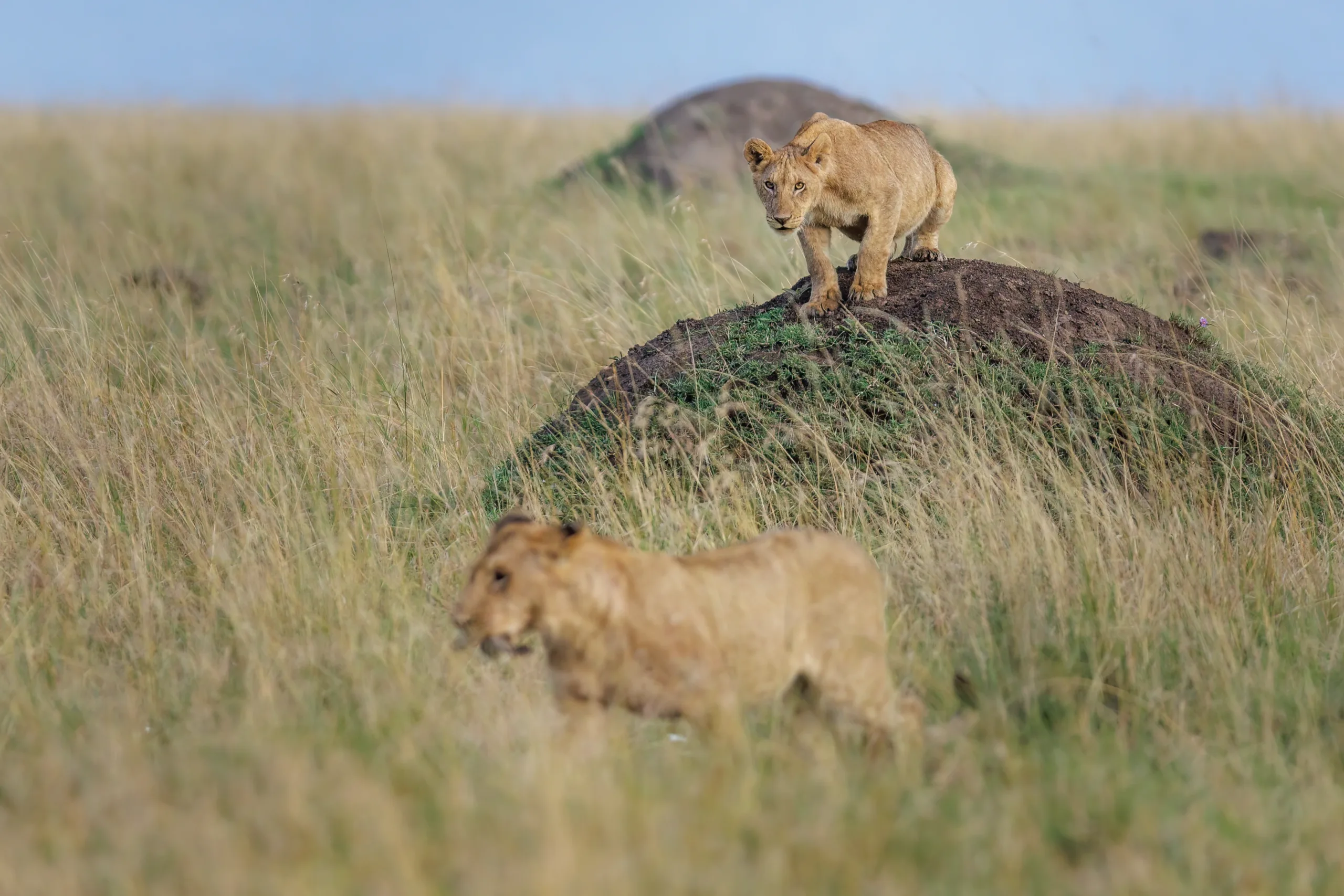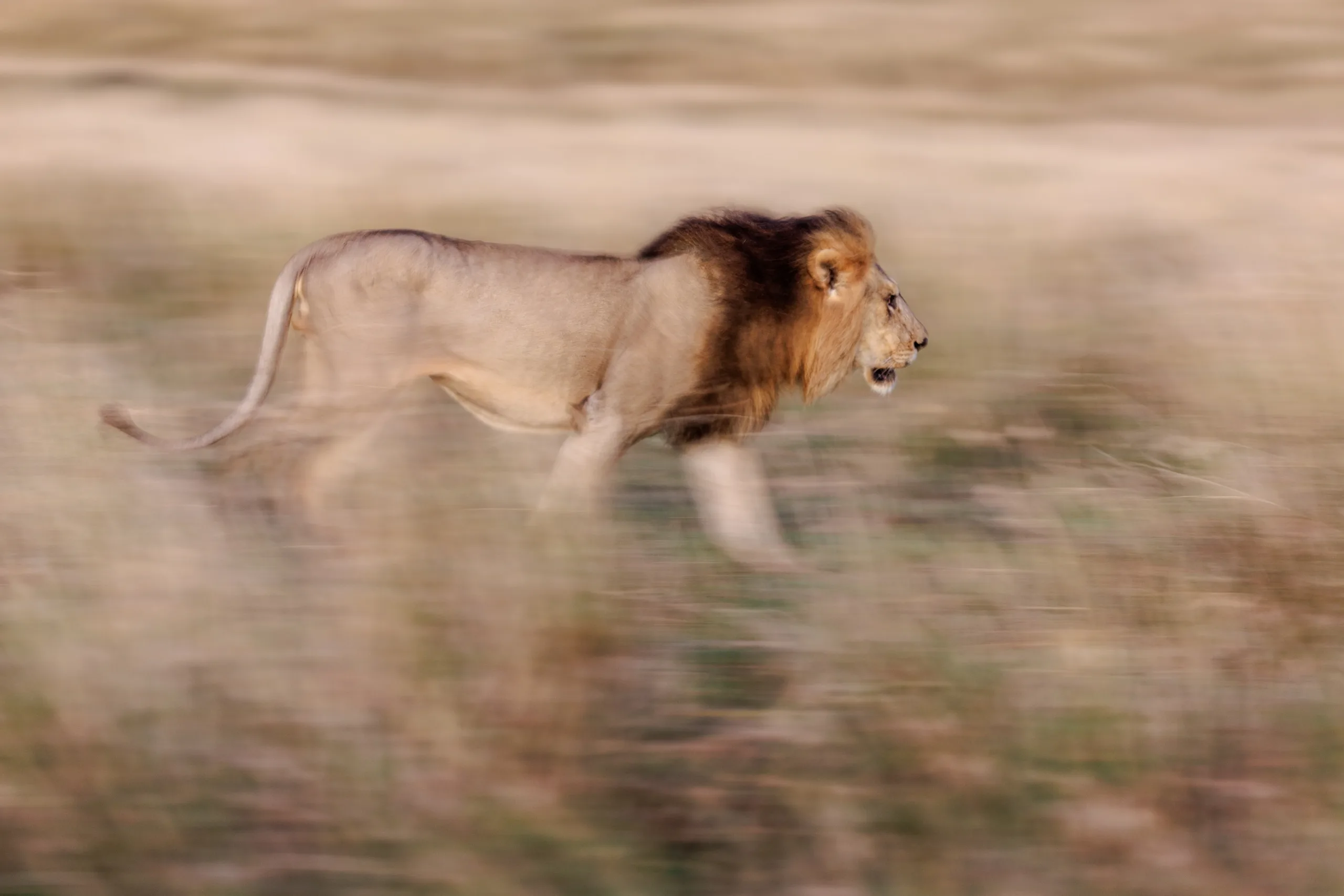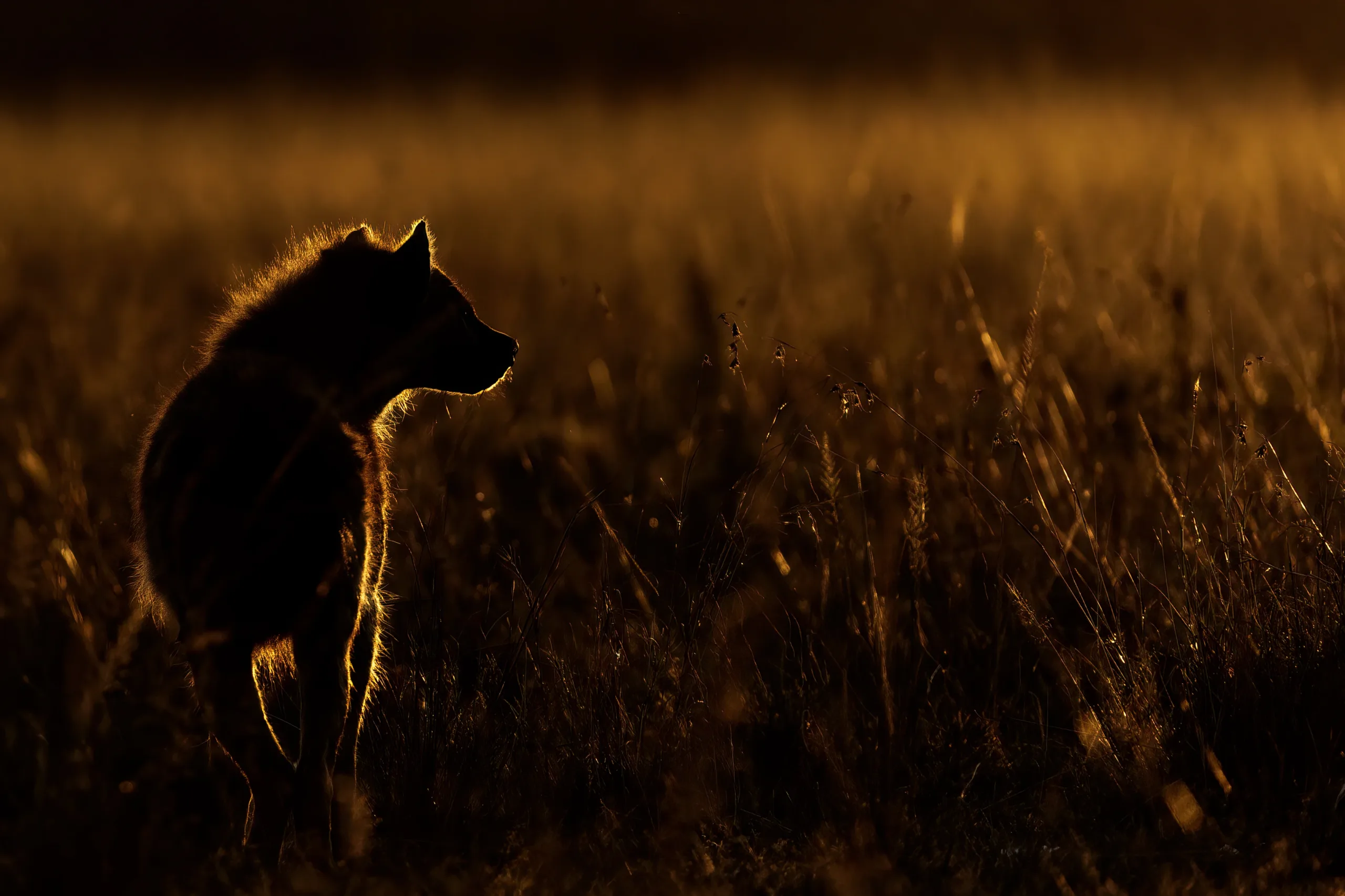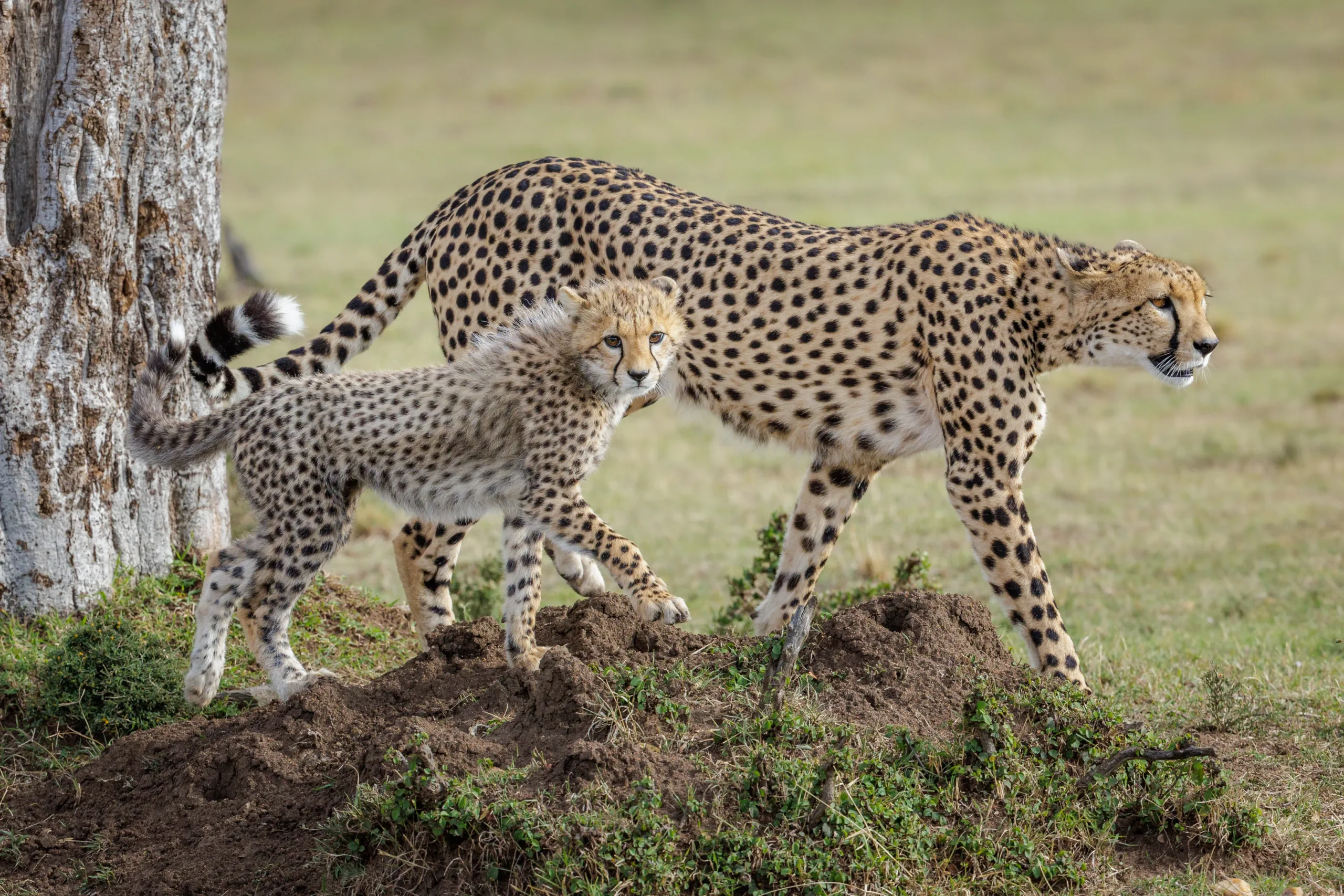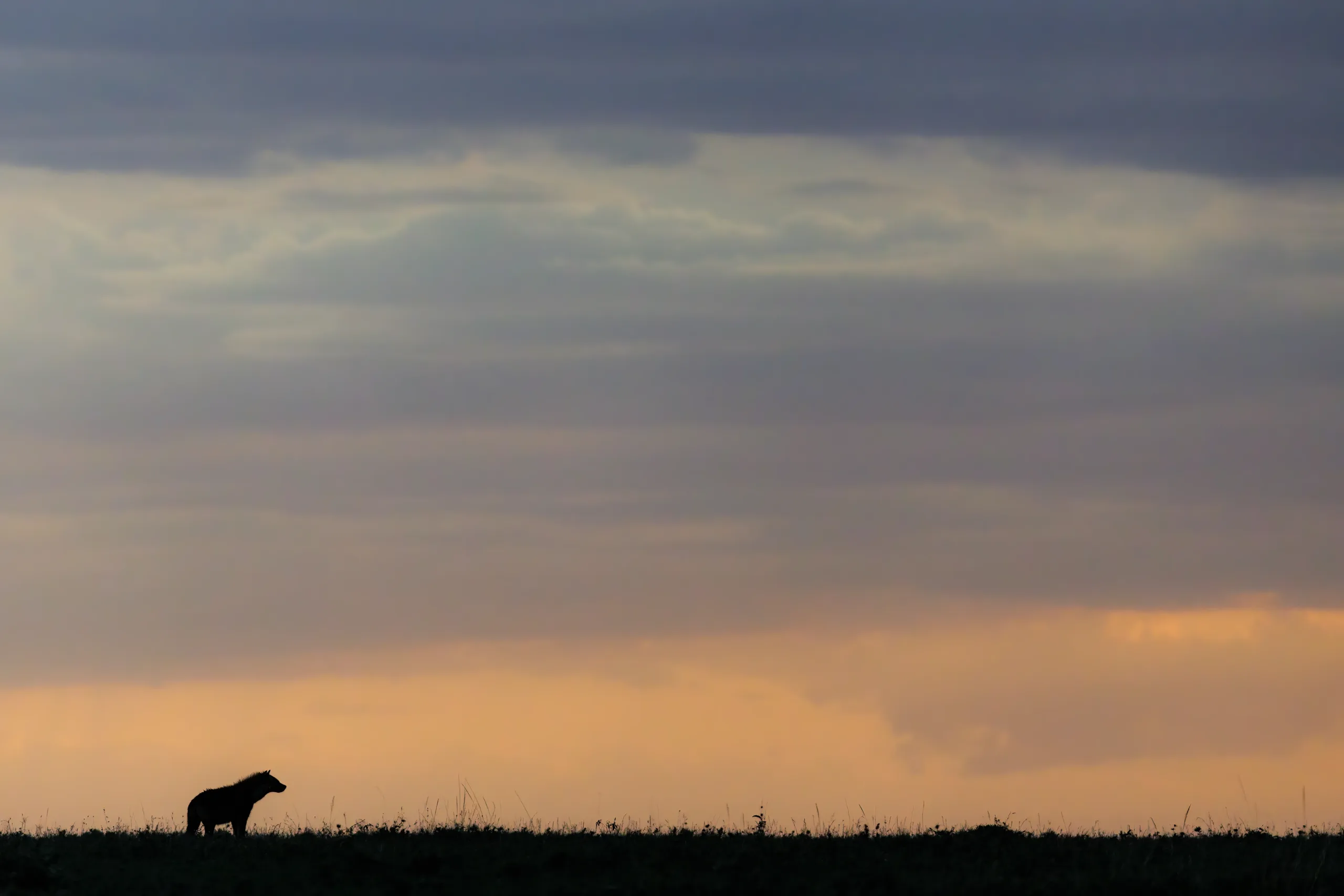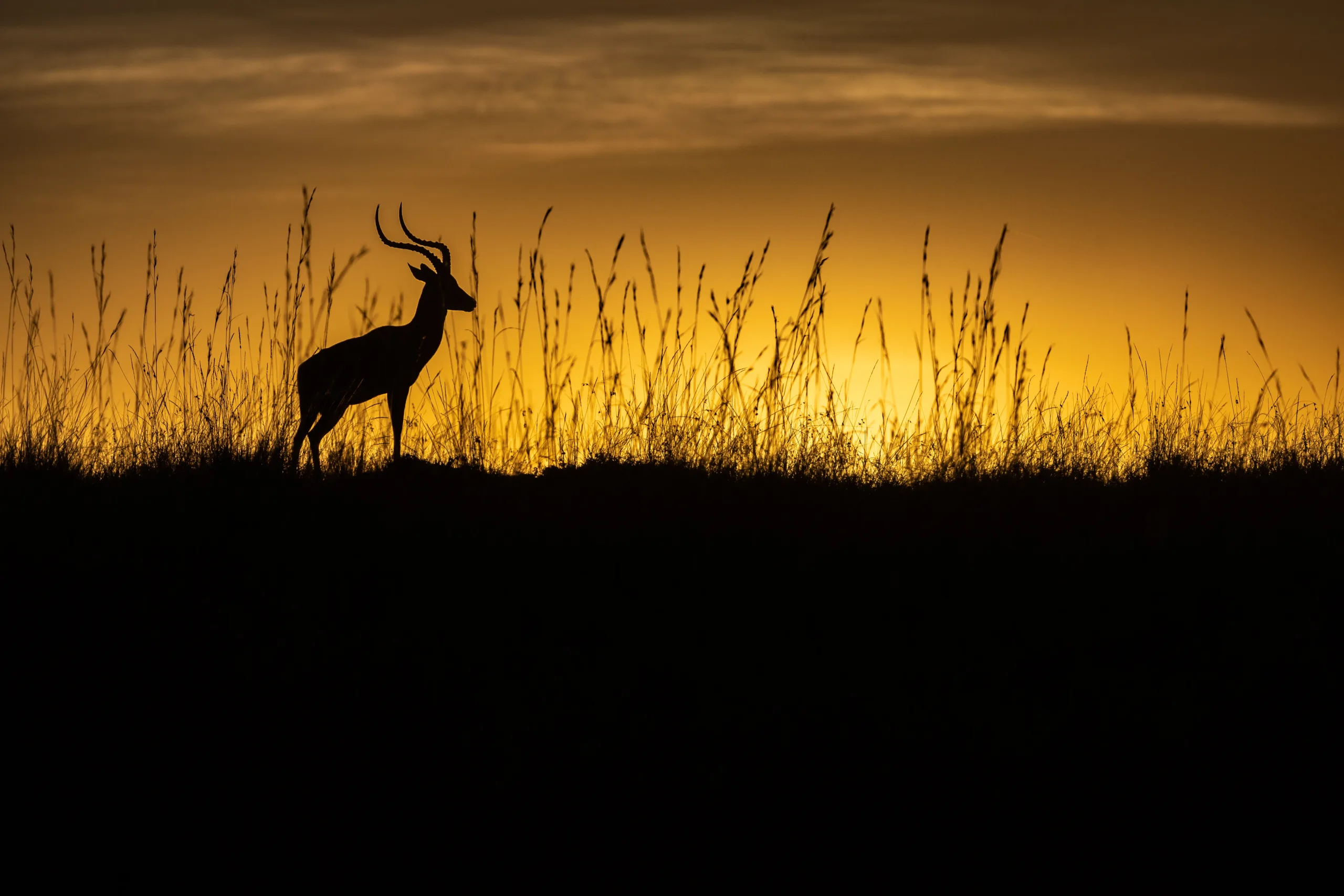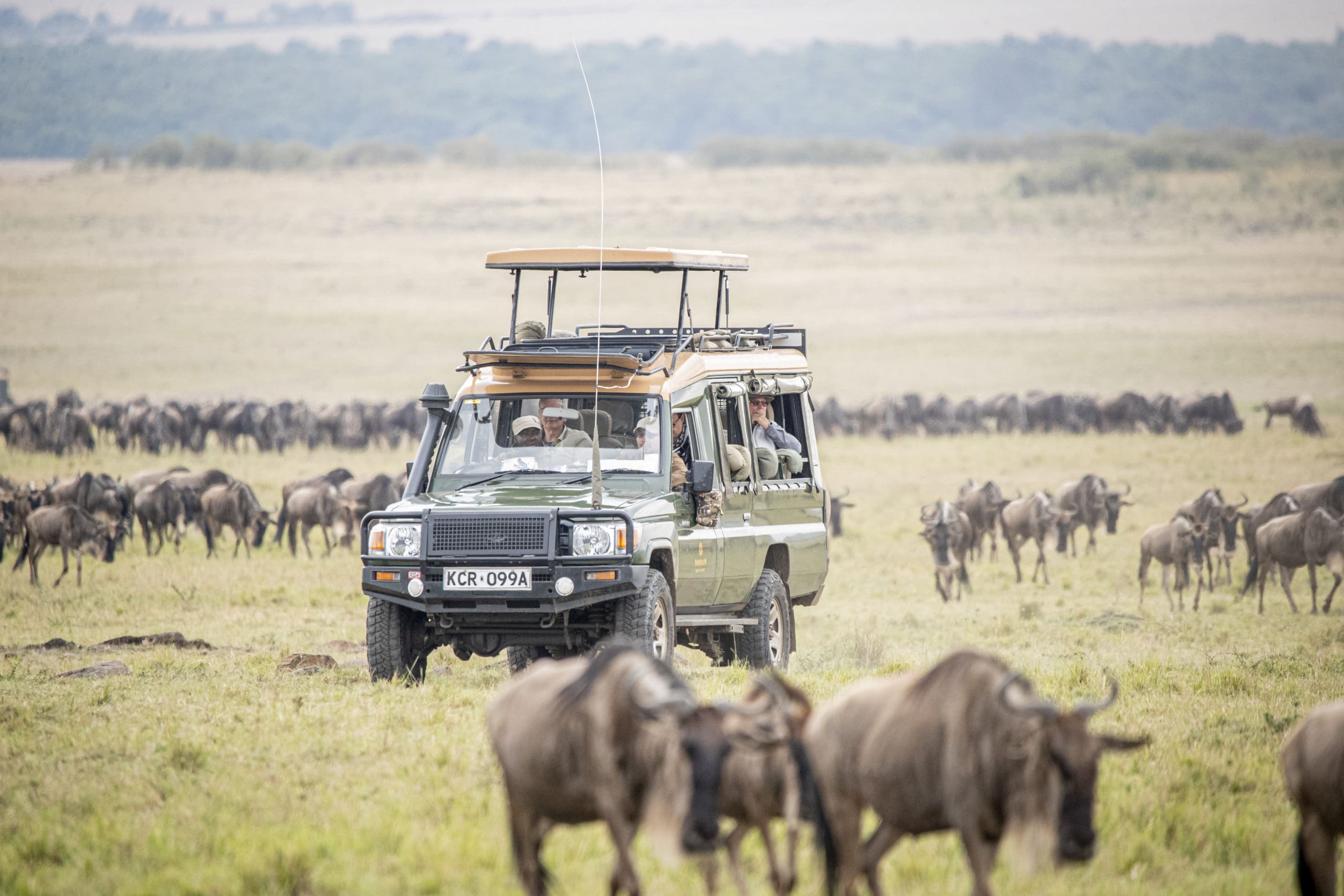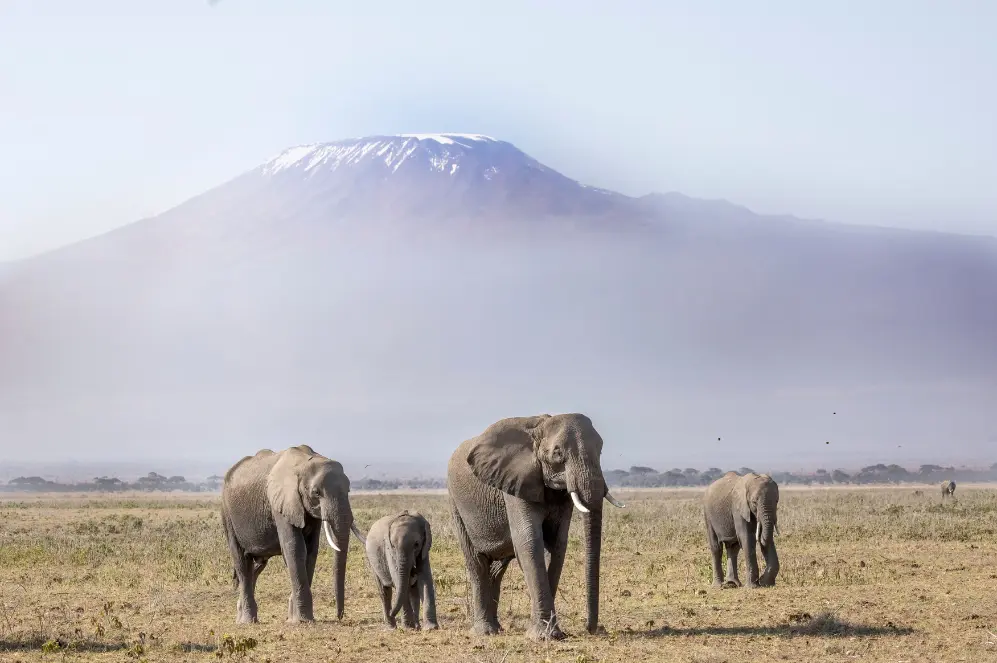Masai Mara
A GUIDE FOR PHOTOGRAPHERS
Very few places in Africa conjure up a promise of wildlife photography in abundance than Kenya’s Masai Mara National Reserve.
This iconic photo destination, famous for its annual Wildebeest and Zebra Great Migration, is so much more than just this incredible yearly event.
The mara is made up of very distinct areas including the National Park, The Mara Triangle (on the other side of the Mara River) as well as community conservancies that offer exceptional wildlife photography opportunities.
The Masai Mara is, in essence, the northern tip of a larger cross border National Park divided by the Kenya/Tanzania Border and The Serengeti to the South. Unlike the wildebeest and Zebras who cross freely, it is currently not possible to simply drive across the border to the other reserve as there is no border post in the park.
Photographic Highlights
The wildebeest migration brings with it the possibility fo seeing a crossing of one of the rivers. This indeed is one of the most dramatic wildlife spectacles on earth but a word of caution – they can be as equally brutal as they are dramatic. The crocodiles in the rivers are absolutely huge and offer no mercy. There is also a huge degree of collateral damage caused by panicked animals stampeding.
We are not, by any means, trying to out you off coming to see the migration but we like our guests to be prepared for what they will be seeing.
In actual fact, the majority of the best photo opportunities are not at the crossings but around the rest of the Mara. The guides we use in the Masai Mara are all specialist photography guides and they seek out plenty of opportunities throughout the day…you will be kept very busy!
Outside of migration season, the wildlife photography is equally good with fewer vehicles to get in the way of your shots and as we mentioned before the big cats have to work harder and are more active.
Aerial photography over the Mara is a must whether it be from a hot air balloon or from a helicopter.
Photo Safari Activities in The Masai Mara
Game Drives
When we are in The Mara we use enclosed long-wheelbase Land Cruisers with pop up roofs and plenty of bean bags. WE limit the number of clients in the vehicle to only four plus a photographic host.
It is not permitted to off-road in the Masai Mara National Park nor the Mara Triangle so we are reliant on our expert guides and their detailed knowledge of the road network (and animal behaviour) to get us into the right position for a shot. This is the difference between a guide who is photo aware and a regular guide. The guides we use are handpicked for this particular skill which they have in abundance.


Flights over the Masai Mara
Hot air ballooning – if you‘re only ever going to fly in a hot air balloon once in your life then you are never going to beat a flight over The Masai Mara! We use Governer’s Camp balloons as they take off right next to the Mara River and follow it all the way down south to the Tanzanian border before landing for a champagne breakfast!
Space is limited in the basket so not much room for extra camera gear. We recommend a telephoto lens as well as one wide-angle for landscapes. Big prime lenses can be cumbersome and not as versatile as a telephoto.
Helicopter – During migration, we retain the services of a top helicopter pilot who can take you on a one hour flight over most of the Mara. The doors are off and the big advantage is being able to hover for a particular shot as opposed to the hot air balloon where you are at the mercy of the winds. The helicopter is a very popular add-on taken by most of the clients.
Masai Mara Village Visit
For guests who enjoy portrait photography and cultural experiences then we arrange a visit to a local Maasai village. Although a little contrived at times it does afford some great photo opportunities and a chance to support a local community.

More Info
The Masai Mara is obviously synonymous with the million wildebeest and zebra that arrive following the short rains in search of grasses which are flourishing after the Long Rains.
There are however plenty of photo opportunities to be had in the Masai Mara throughout the year. The big cats, being territorial, do not follow the herds and it is understood that they are far more active when the herd is not in residency as they are having to work harder for a meal!
Cheetah is always a highlight whether they are posing on termite mounds, scanning the horizon, or in full flight in pursuit of a Thompson’s gazelle.
Even with trees generally being so sparse there is plenty of birdlife in the Mara especially near to the rivers. Vultures are obviously plentiful. Larger birds such as Secretary birds and Grey Crowned Cranes are easily spotted on the open savannahs.
The Greater Masai Mara ecosystem covers an area of approx 1,510 km2 (580 sq mi) which is dwarfed by the neighbouring Serengeti National Park portion which is over twenty times bigger.
The Masai Mara consists of open grasslands with clumps the iconic Acacia Trees and is crisscrossed by seasonal rivers.
There are areas of marshland made famous by TV programmes like the Big Cat Diaries and the Marsh Pride of Lions that hunt and live here.
Unlike Southern Africa, East Africa has two, rather than one rainy season names the short and long rains. The Long Rains appear in April and May and the Short rains later in the year around November. As with most rain in Africa, the rain builds to a crescendo with a downpour rather than drizzling. The cloud build-up adds amazing dram to images taken in these times.
Air
Wilson Airport is the domestic charter hub in Nairobi where you fly into The Masai Mara. Most of the international flights that come into Jomo Kenyatta International Airport arrive late in the afternoon or early evening and require an overnight stay. We use a couple of great hotels close to Wilson for these overnights which negate the effect of Nairobi’s morning rush hour!
A question that we are often asked is when is the best time to see the migration and that is nearly impossible to answer as the movement (and density) of the herd can vary by several weeks, either way, depending on the rains.
WE find that the sweet spot for us is at the end of August into September but we are constantly tweaking this projection on an annual basis.
The non-migration times in The Masai Mara should also never be discounted. The safaris package costs are almost halved and the game viewing is spectacular. We suggest that every keen wildlife photographer should try both seasons at least once in their lifetimes.

